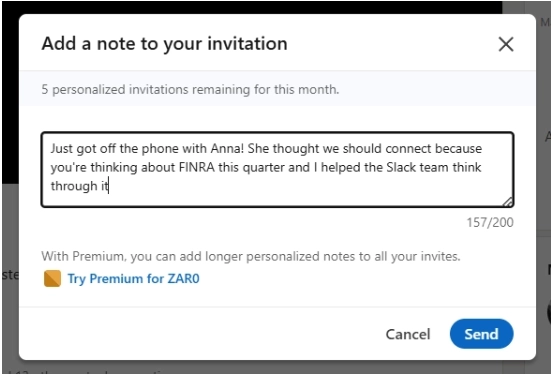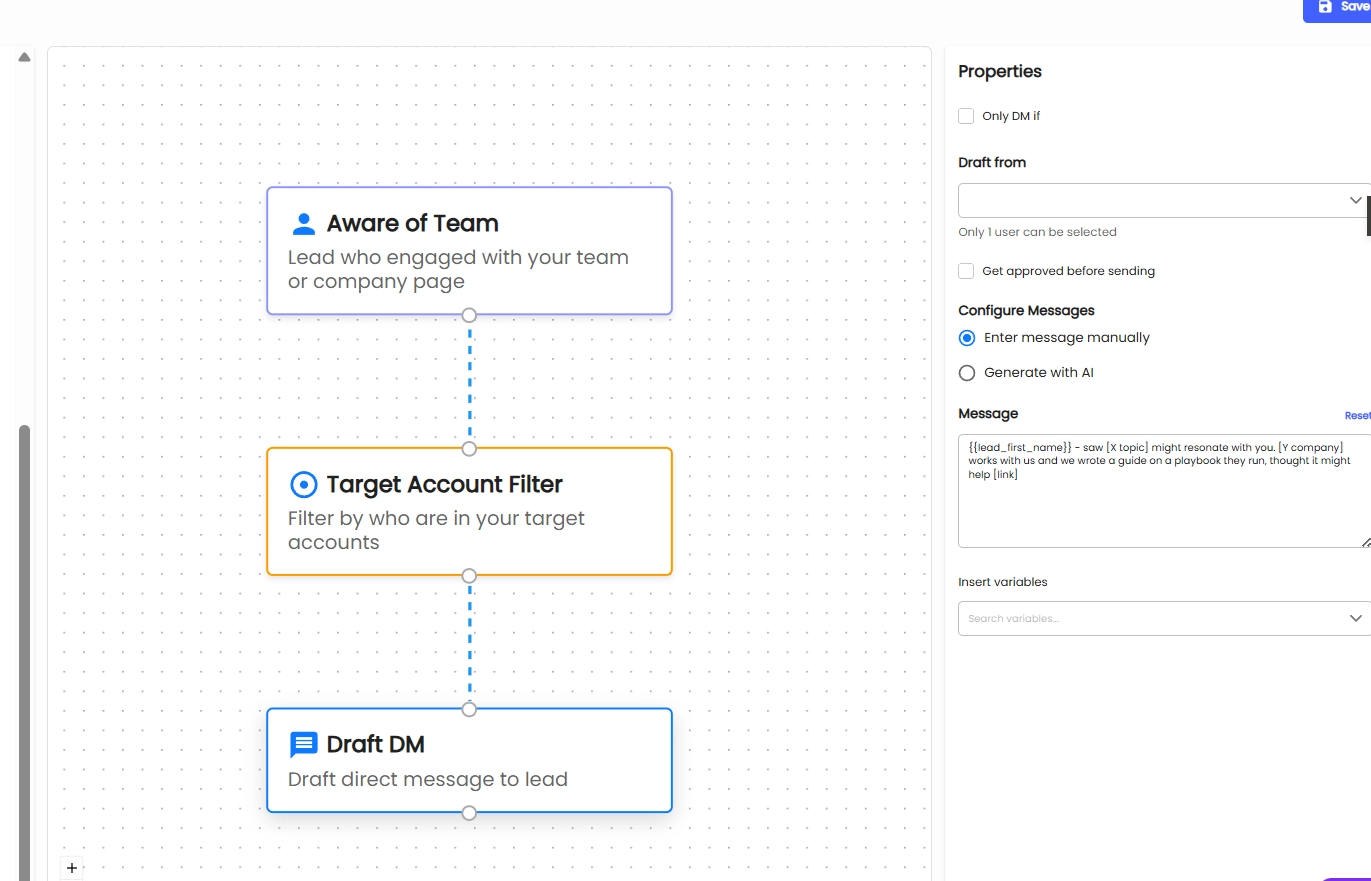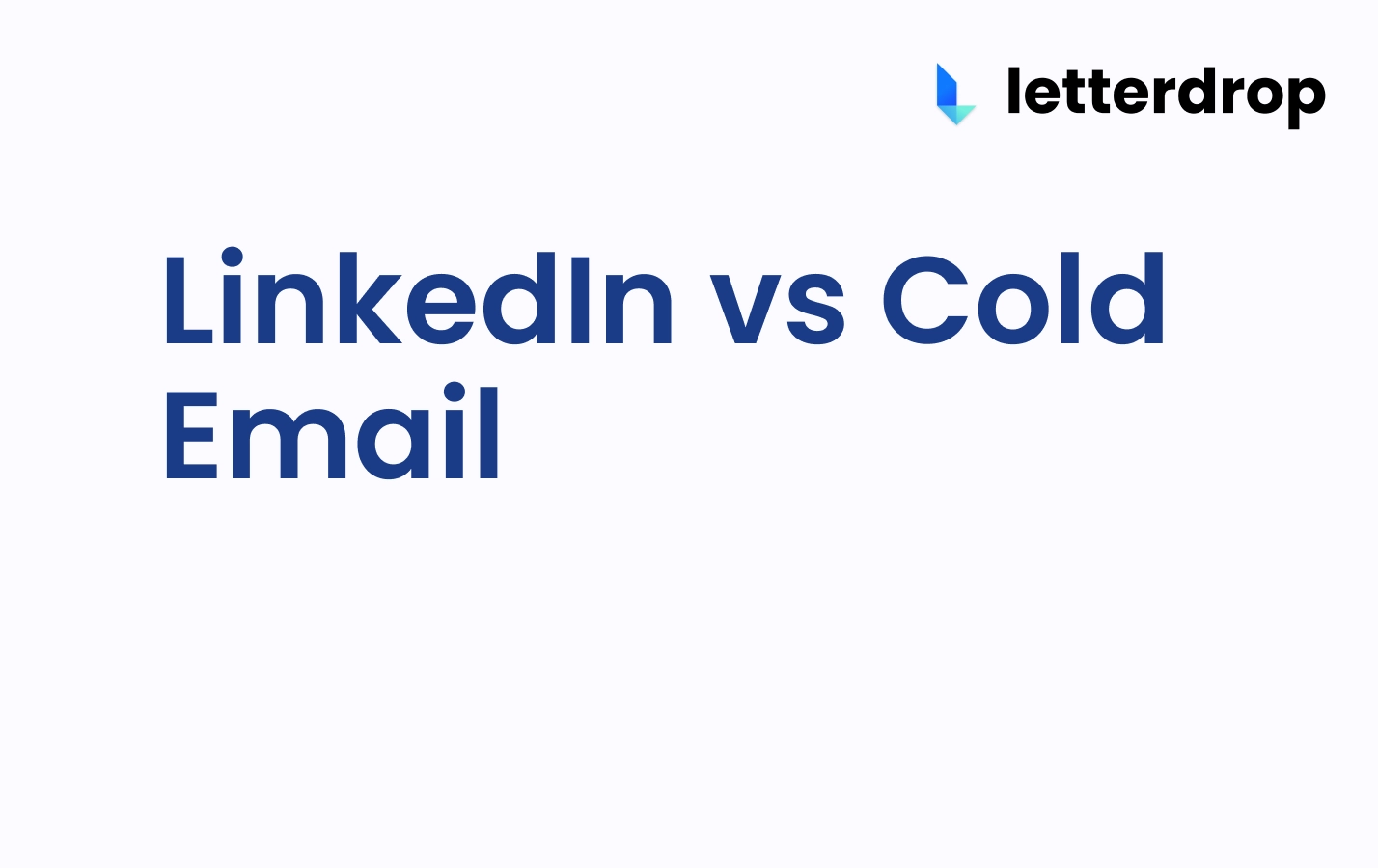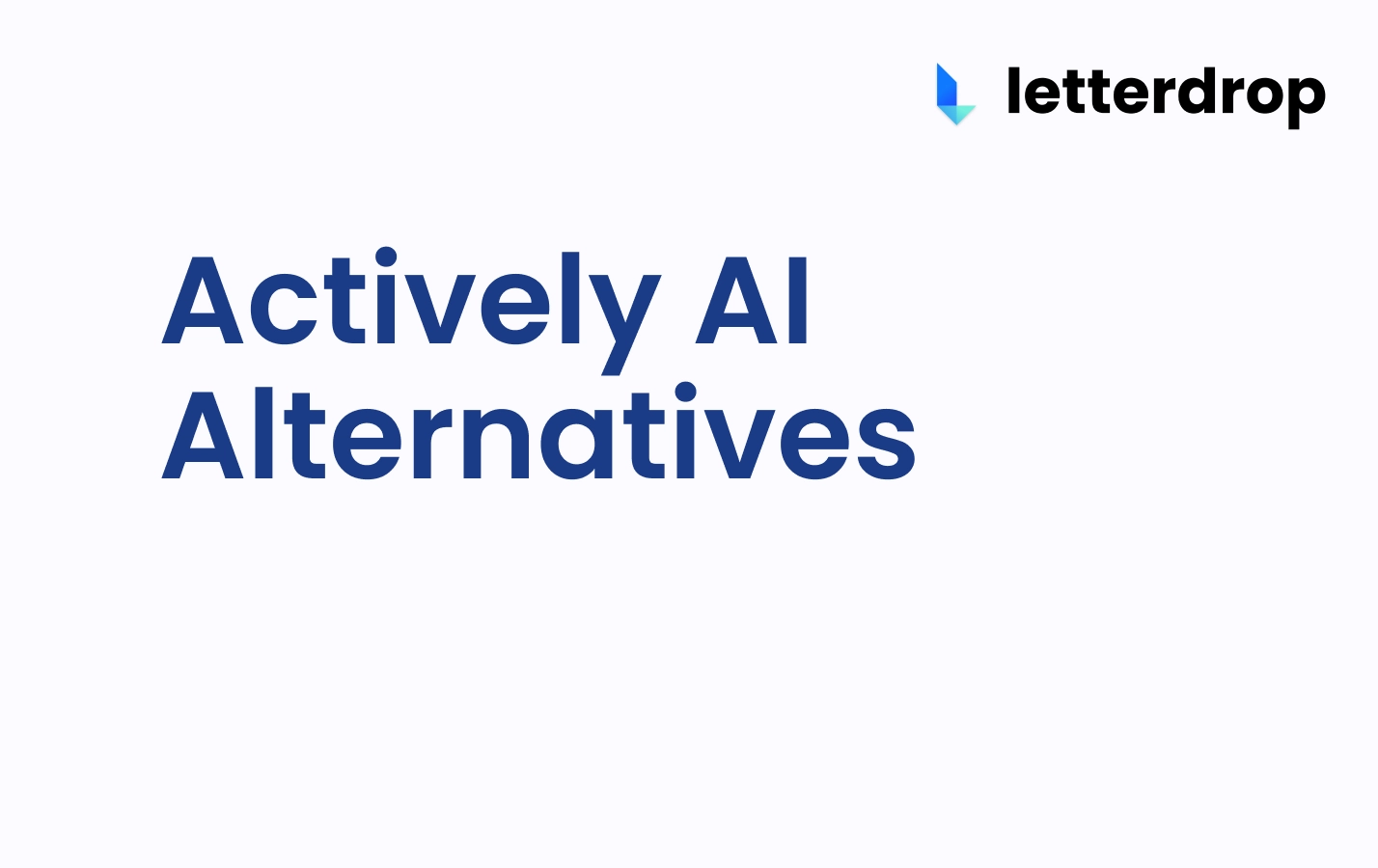How to Draft LinkedIn DMs to RB2B Site Visitors (and Turn Them Into Meetings)
With RB2B, you already know:
- The company visiting your site
- The pages they viewed
- The frequency of visits
That’s real buying-signal data you can turn into warmer outreach.
Most teams either let those visitors disappear or throw them into generic cold sequences.
Instead: Draft personalized, stage-aware LinkedIn DMs that speak directly to what those RB2B visitors are thinking about right now.
Map RB2B Visitors to Awareness Stages Before You DM
Not every RB2B visitor is ready for the same message. Before drafting, identify which of the five awareness stages they’re in:
- Unaware → Don’t realize they have a problem. Might just hit your blog/homepage. Best move: connect only, no DM unless you have a personal reason.
- Problem-Aware → Know the pain, not solutions. Browsing “why outbound fails” content. Ex: “Hey Lisa, other [roles] keep mentioning [challenge] as a headache — is that something you’re running into too?”
- Solution-Aware → Exploring solution categories (features/overview pages). Ex: “Steve, saw [X topic] might resonate — here’s a playbook [Y company] runs that could help.”
- Product-Aware → Comparing you vs. competitors (list posts, competitor pages). Ex: “Hi Mark, saw [Competitor] post on intent signals. They’re right about timing, but here’s what they miss and how we handle it end-to-end.”
- Most Aware → Checking pricing/case studies repeatedly. Ex: “Hey Sam, working on [related issue] with teams like yours — want to brainstorm a few ideas?”


+
The Manual Way Isn’t Scalable
Doing this without automation means:
- Refreshing RB2B daily for new visitors
- Hunting down decision-makers on LinkedIn
- Guessing intent from visit history
- Manually drafting each DM
By the time you hit send, the buying window could be gone.
Turn RB2B Data Into Stage-Aware DM Drafts
Letterdrop plugs directly into your RB2B feed to:
- Classify awareness stage – Problem-aware, solution-aware, or most aware based on behavior.
- Auto-draft LinkedIn DMs – Tailored to their stage, role, and the context of their visit, which you can outbound in your own system like Apollo, Outreach, etc
- Push to SDR/AE workflows – So messages get sent while the visitor is still thinking about you.
Here's an example of a workflow + a DM template:

Start Converting RB2B Visitors Into Pipeline
If you’re already paying for RB2B, you’re sitting on high-intent data every day.
Letterdrop helps you act on it instantly, with stage-aware LinkedIn DMs that feel 1:1 but scale to your entire RB2B feed.
Subscribe to newsletter
No-BS GTM strategies to build more pipeline in your inbox every week
Related Reading
Some other posts you might find helpful
















